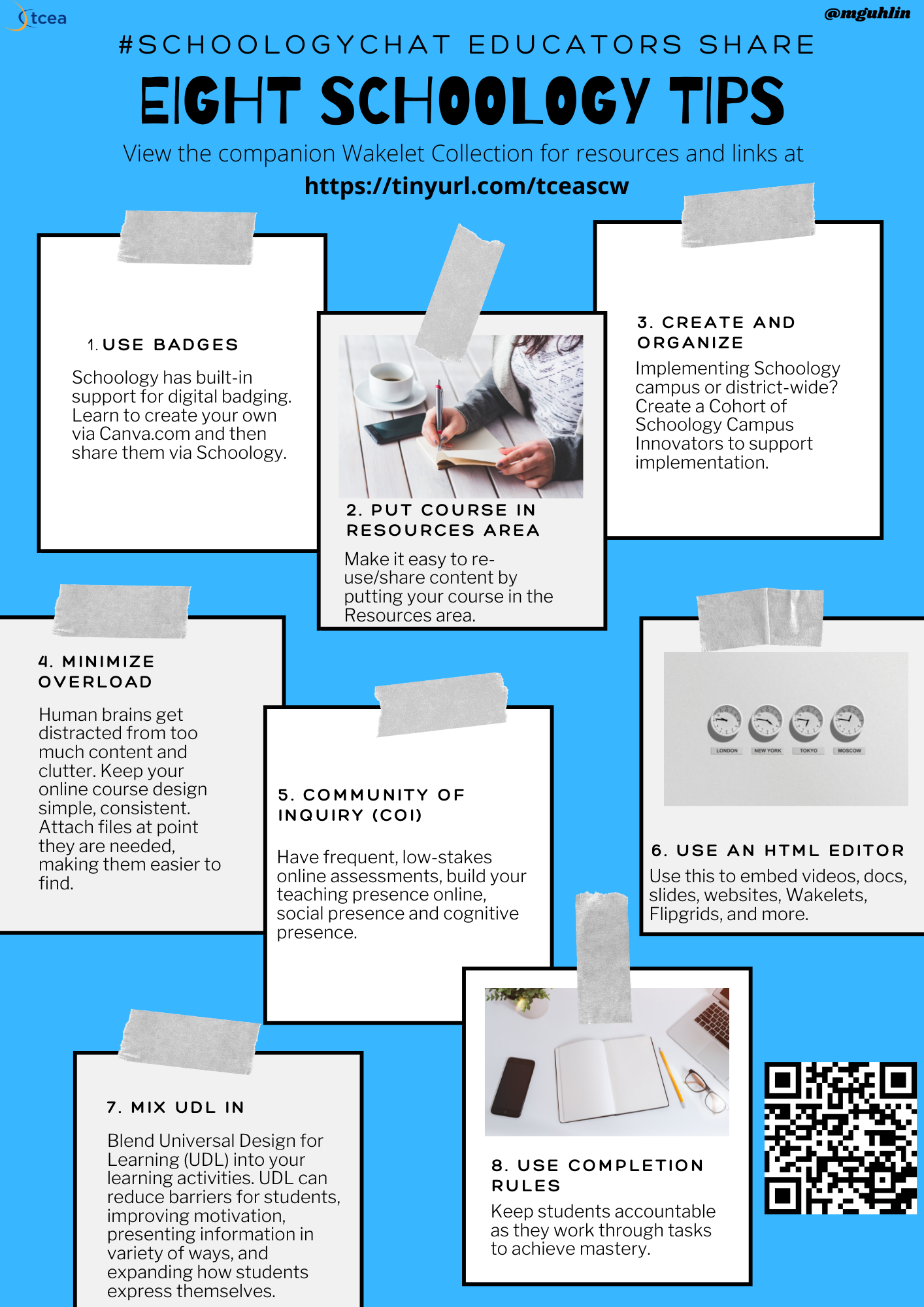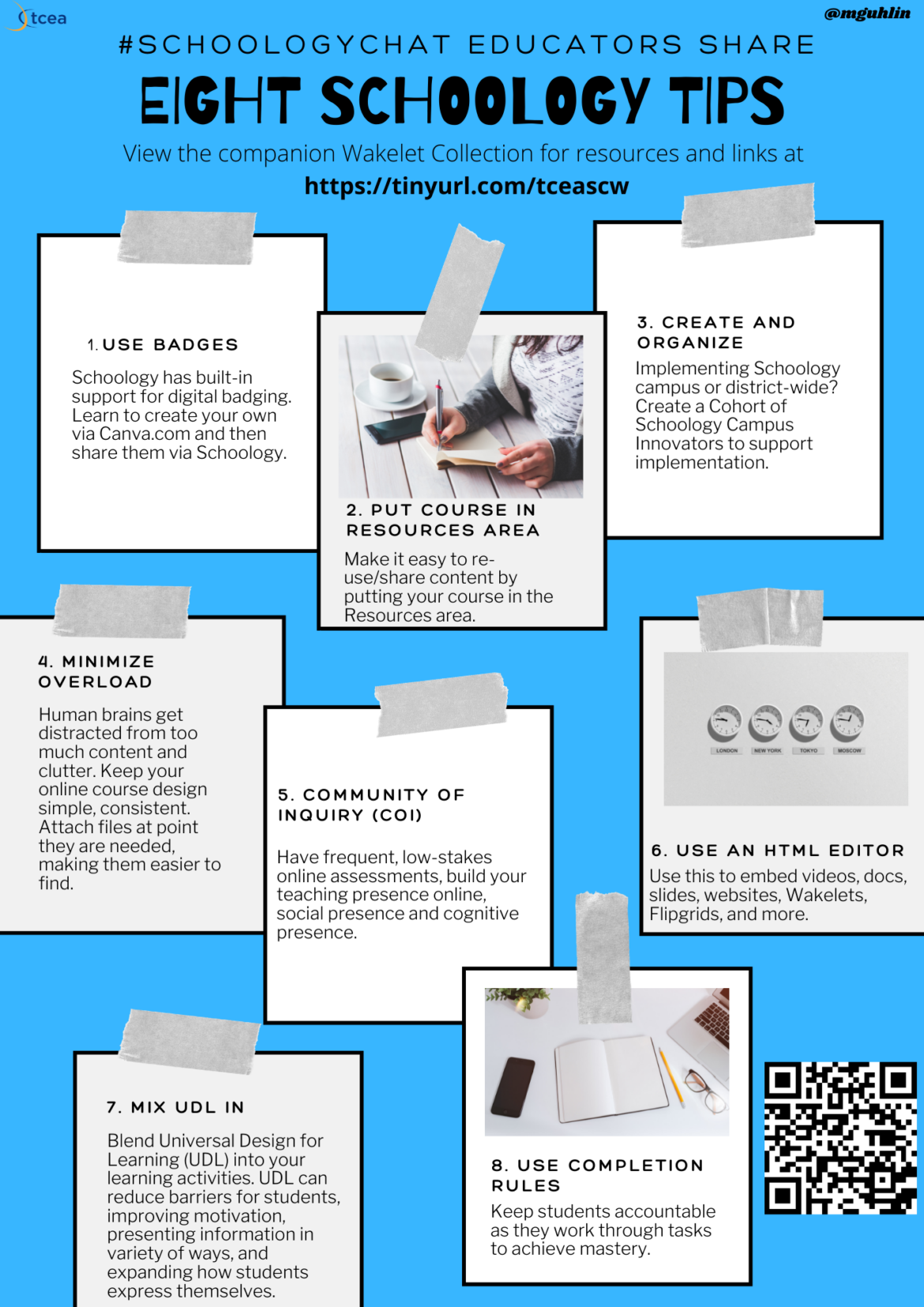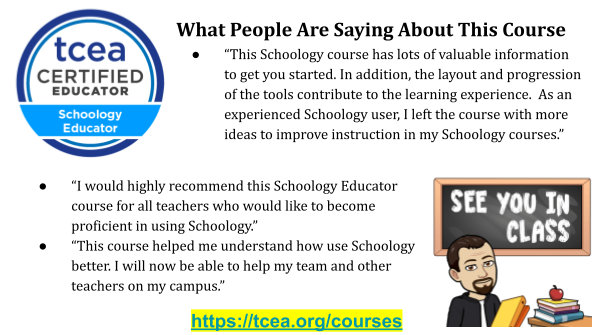If you’re starting the school year learning how to better use your school’s learning management system, getting to know your virtual classroom space can be tough. In this blog entry, you will see some of the tips and suggestions for Schoology shared via #SchoologyChat.
About #SchoologyChat
The Twitter chat these tips originated from took place on August 10, 2021. Although late to the party, I reviewed some of the chat, made notes to share with you, and archived the chat via Wakelet. Additionally, I put supporting tweets and resources into a separate Wakelet collection linked below.

Visit the Schoology Chat Wakelet Collection
Not only do you have access to the original tweets in the chat from August 2021, but you also get eight curated tips with resource links; more on that in a moment. Remember, if you are looking for even more conversations about Schoology, check the Schoology Educator Community on Facebook.
Let’s take a look at a few of the tips shared. I’m going to offer up three of my favorites from the list, but there are more, and I recommend taking a look.
Tip #1: Using Digital Badges in Schoology
Digital badges, also known as micro-credentialing, have made it easy to track learning and growth. Digital badging can spur motivation among learners and, as a result, improve performance. You can use several resources to beef up your digital badging in Schoology, and you can see multiple examples in the Wakelet collection linked above. You may also find this video on adding and customizing badges helpful. It features Stephen Rao (@sterao8) video on the subject. You can find others in the attached Wakelet collection.
Tip #2: Schoology Campus Innovators
One of the most insightful tips involved creating a cohort of Schoology Campus Innovators. Imagine these as tech-powered coaches who can provide “just-in-time” support to educators as the campus or district implements Schoology. Moreover, tie into a Schoology Ambassador program for more empowered learning opportunities for Schoology Campus Innovators.
Tip #3: Community of Inquiry
Not familiar with the components of a Community of Inquiry (CoI)? A CoI offers a way for individuals to engage in critical discourse and reflection. According to Athabasca University’s interactive CoI website, CoI exhibits three interdependent elements:
- “Social presence is “the ability of participants to identify with the community (e.g., course of study), communicate purposefully in a trusting environment, and develop interpersonal relationships by way of projecting their individual personalities” (Garrison, 2009, p. 352).
- Teaching Presence is the design, facilitation, and direction of cognitive and social processes to realize personally meaningful and educationally worthwhile learning outcomes (Anderson, Rourke, Garrison, and Archer, 2001).
- Cognitive Presence is the extent to which learners are able to construct and confirm meaning through sustained reflection and discourse (Garrison, Anderson, and Archer, 2001). “
As you might imagine, there’s a lot to unpack in the CoI related to the design of online education. For this reason, Purdue University offers a quick overview in a two-page document that I recommend reviewing.
Schoology Tips
To further explore these points, please access this Wakelet Collection, which provides various resources to support each point. Even more will be added over time.
Need a quick handout you can share with other educators? Use this infographic to start your own chat.

Feature Image Source
Image by author.


